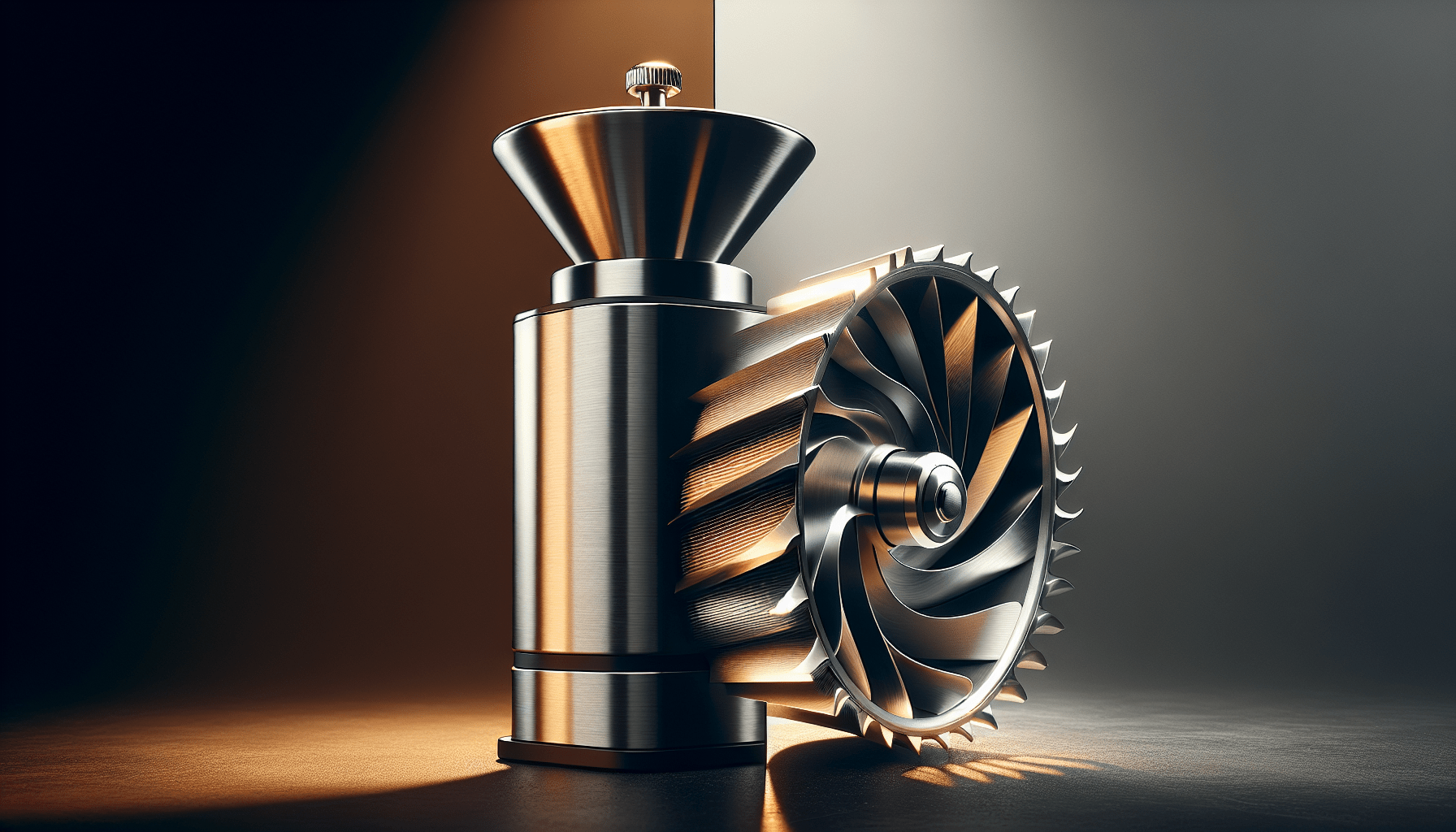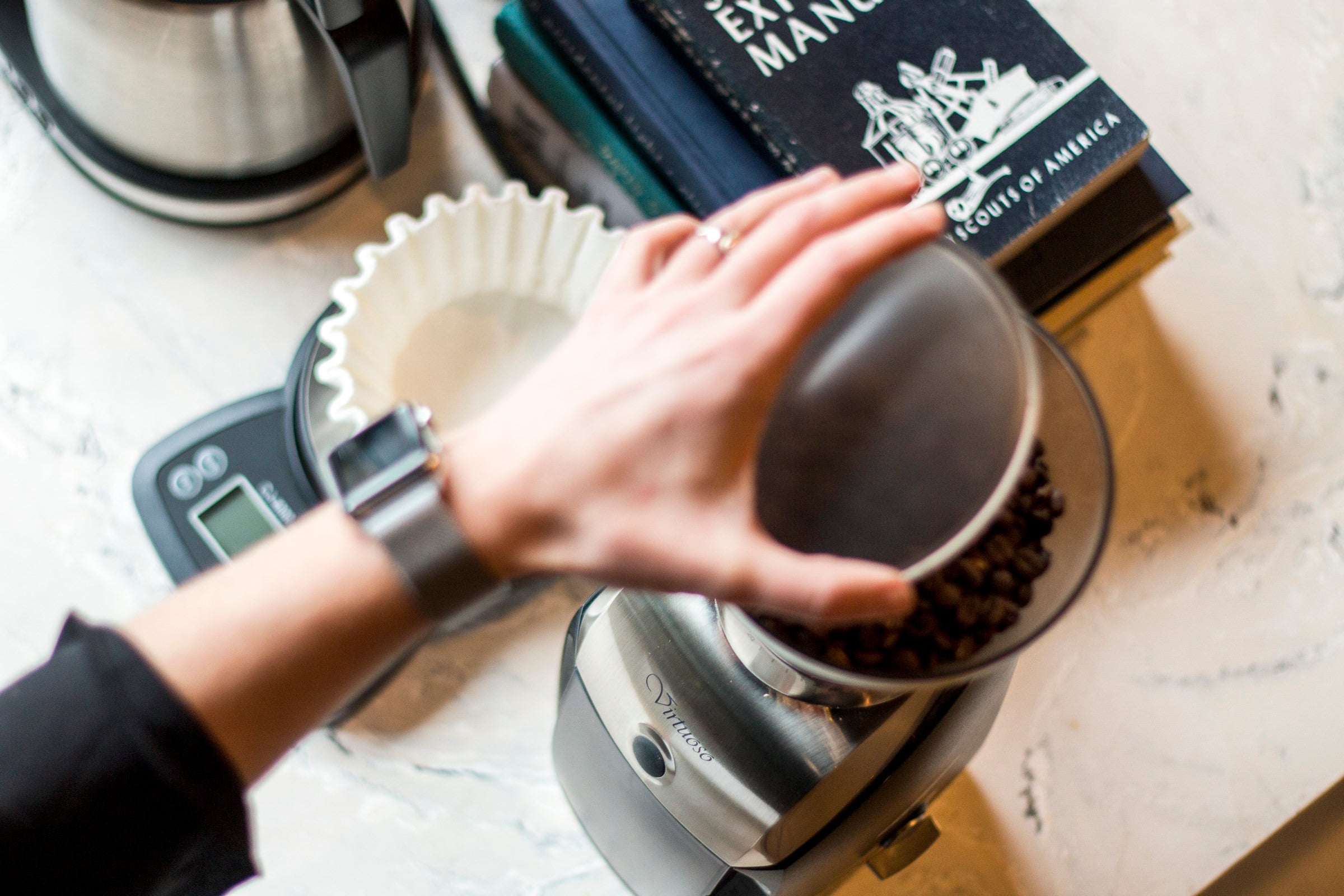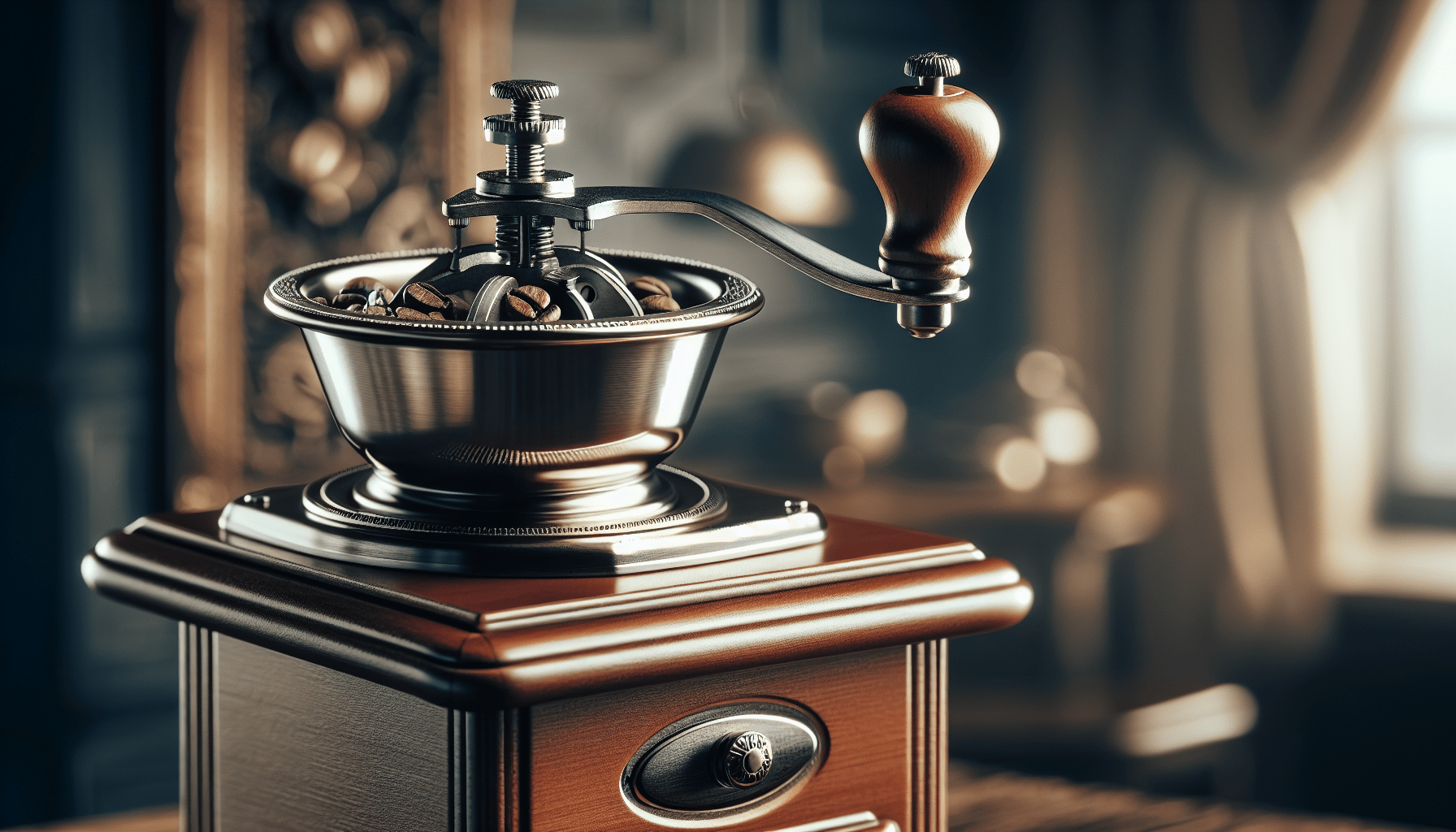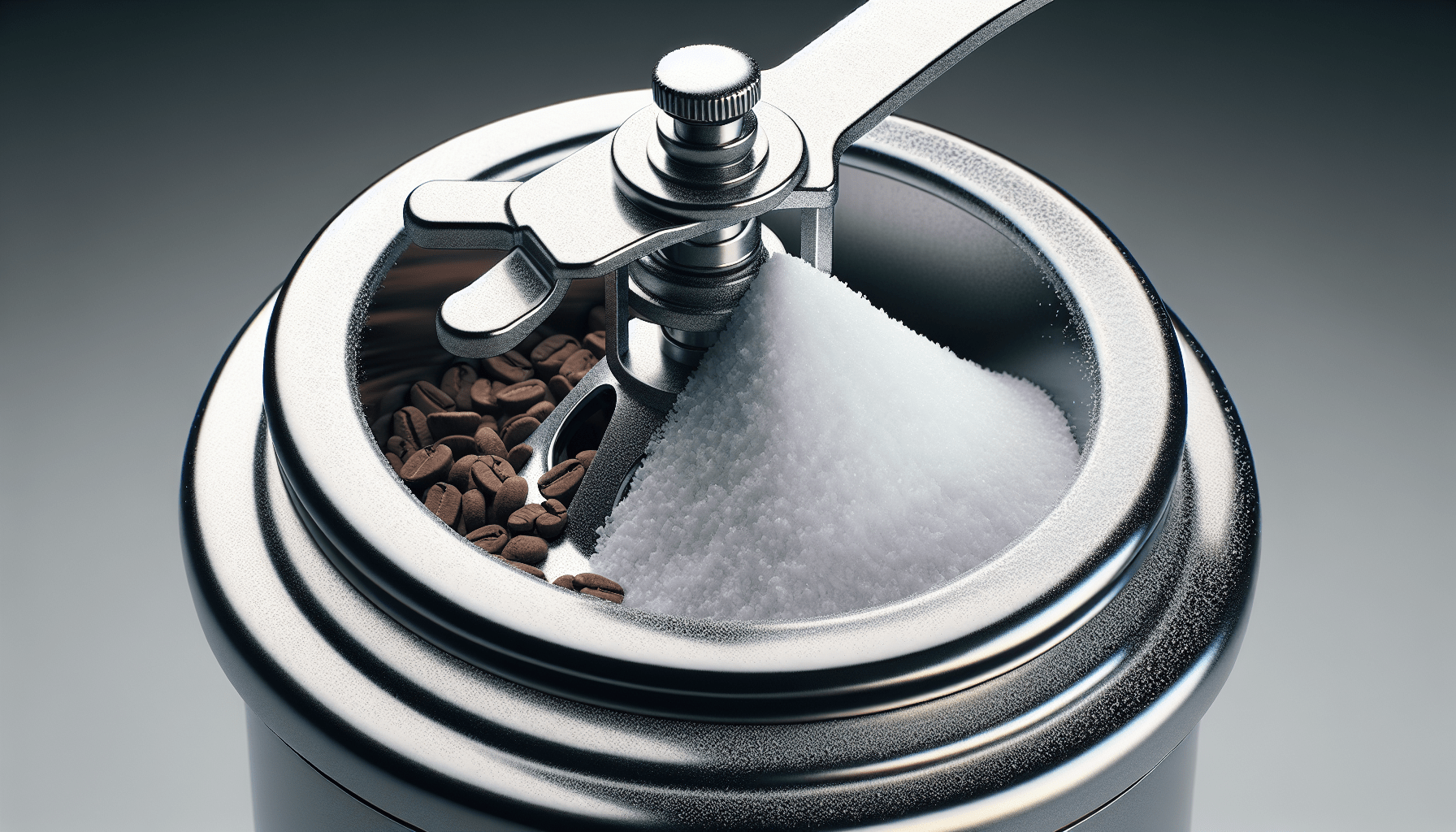If you’re someone who enjoys starting your day with a freshly brewed cup of coffee, then you’re probably familiar with the dilemma of choosing between a burr grinder and a blade grinder. While both of these tools can help you achieve the perfect grind for your coffee beans, they differ in terms of mechanism and the quality of the grind. In this article, we will explore the key differences between burr grinders and blade grinders, helping you make an informed decision about which one is the right fit for your morning caffeine fix.
Grinding Mechanism
Burr Grinder
A burr grinder is a type of coffee grinder that uses two revolving abrasive surfaces, known as burrs, to grind coffee beans into a uniform grind size. These burrs are typically made of high-quality stainless steel or ceramic, and they work by crushing the coffee beans between them. The distance between the burrs can be adjusted to achieve different grind sizes, allowing for greater control over the final outcome of your coffee grounds.
Blade Grinder
On the other hand, a blade grinder is a more basic and common type of coffee grinder. It consists of a metal blade that spins rapidly to chop the coffee beans into smaller pieces. Unlike a burr grinder, a blade grinder does not have the ability to produce a consistent grind size. The resulting grounds can vary in size, which can affect the flavor and quality of your coffee.
Consistency of Grind
Burr Grinder
One of the key advantages of a burr grinder is its ability to produce a consistent grind size. The burrs ensure that the coffee beans are ground uniformly, resulting in a more even extraction of flavor during the brewing process. This consistency is particularly important for brewing methods such as espresso, where precise grind size is crucial for achieving optimal extraction.
Blade Grinder
In contrast, a blade grinder often produces an inconsistent grind size. The spinning blade chops the coffee beans into various-sized particles, including some finer particles and larger chunks. This inconsistency can lead to an uneven extraction, resulting in a cup of coffee that may taste bitter or weak in certain areas.
Heat Generation
Burr Grinder
Burr grinders are generally known for their ability to minimize heat generation during the grinding process. The slower speed at which the burrs rotate generates less heat, which helps preserve the delicate flavors and aromas of the coffee beans. This is important because excessive heat can alter the taste of the coffee and even potentially burn the beans, resulting in a bitter or scorched flavor.
Blade Grinder
Blade grinders, on the other hand, tend to generate more heat due to the high-speed rotation of the metal blade. The friction created by the blades can cause the coffee beans to become warmer, which can negatively affect the flavor and aroma of the coffee. Additionally, the heat generated by the blades can potentially lead to overheating and scorching of the coffee grounds, resulting in a less desirable cup of coffee.
Grind Size Options
Burr Grinder
Burr grinders are renowned for their versatility in providing a wide range of grind size options. By adjusting the distance between the burrs, you can achieve a fine grind for espresso, a medium grind for drip coffee, or a coarse grind for French press. This flexibility allows you to adapt the grind size according to your preferred brewing method and experiment with different flavor profiles.
Blade Grinder
Blade grinders typically offer limited control over the grind size. The duration for which you operate the grinder determines the resulting grind size, but it can be challenging to achieve consistent results. While you can achieve a finer grind by grinding for a longer duration, it is difficult to replicate the results precisely. This lack of control over the grind size may limit your brewing options and the quality of your coffee.
Grind Speed
Burr Grinder
Burr grinders are known for their relatively slower grind speed compared to blade grinders. While this may be seen as a disadvantage for those seeking a quick cup of coffee, the slower grind speed actually has its benefits. The slower process allows the beans to be ground more precisely, reducing the risk of overheating and resulting in a more consistent grind size for a better-tasting cup of coffee.
Blade Grinder
Blade grinders are favored for their quick grinding process. The high-speed rotation of the blades allows the coffee beans to be chopped into smaller pieces rapidly. This can be advantageous for those who prefer a fast and convenient brewing experience. However, the speed at which the blades operate can also lead to inconsistent grind sizes and potentially alter the flavor of the coffee due to the heat generated.
Noise Level
Burr Grinder
Burr grinders are generally known for their quieter operation compared to blade grinders. The grinding mechanism of the burrs produces less noise, making them a more suitable option for those who prefer a quieter coffee grinding experience. This can be particularly beneficial if you live in a small apartment or have a sensitive household environment where minimizing noise is important.
Blade Grinder
Blade grinders tend to produce more noise due to the high-speed rotation of the metal blade. The chopping action of the blades can create a noticeably louder grinding process compared to burr grinders. This may not be an issue for everyone, but if you value a quieter atmosphere or live with people who are sensitive to noise, a blade grinder may not be the most ideal choice.
Price Range
Burr Grinder
When it comes to price, burr grinders generally tend to be more expensive compared to blade grinders. The precision engineering and higher-quality materials used in burr grinders contribute to their higher price point. However, if you are a serious coffee enthusiast or someone who values consistency and control over your coffee brewing, investing in a burr grinder can be a worthwhile long-term investment.
Blade Grinder
Blade grinders are typically more affordable compared to burr grinders. Their simpler design and use of basic components contribute to their lower price range. If you are on a tight budget or only require a basic grinder for occasional use, a blade grinder can be a cost-effective option. However, it is important to consider the potential trade-offs in terms of grind consistency and overall quality of your brewed coffee.
Ease of Use
Burr Grinder
Burr grinders are generally considered to be more user-friendly compared to blade grinders. They often come with user-friendly controls and adjustable grind settings, allowing you to easily customize the grind size according to your preferred brewing method. Additionally, the consistency and control provided by burr grinders make them more forgiving for beginners, as a small adjustment in grind size can greatly impact the taste of your coffee.
Blade Grinder
Blade grinders are relatively simple to use, typically requiring only the press of a button to start the grinding process. However, achieving a consistent grind size can be challenging due to the nature of the blade’s chopping action. It often requires trial and error to determine the optimal grinding duration for your desired grind size. Beginners may find it more difficult to consistently achieve the desired taste with a blade grinder compared to a burr grinder.
Cleaning and Maintenance
Burr Grinder
Burr grinders generally require more regular cleaning and maintenance compared to blade grinders. The complex mechanism of the burrs and the potential accumulation of coffee oils and residue necessitate periodic cleaning to prevent clogs and maintain the grinder’s performance. Fortunately, many burr grinders come with removable burrs or built-in cleaning functions that simplify the cleaning process and ensure the longevity of your grinder.
Blade Grinder
Blade grinders are typically easier to clean and maintain compared to burr grinders. Since they lack the intricate components of burr grinders, cleaning a blade grinder usually involves wiping the exterior and removing any residue from the grinder’s interior. Some blade grinders also come with detachable blades for easier cleaning. However, it is important to note that blade grinders may require more frequent cleaning to prevent the buildup of residue that can affect the taste and quality of your coffee.
Suitability for different brewing methods
Burr Grinder
Burr grinders are highly versatile and well-suited for various brewing methods due to their ability to produce a wide range of grind sizes. Whether you prefer espresso, drip coffee, pour-over, French press, or any other brewing method, a burr grinder can help you achieve the ideal grind size and consistency for optimal extraction. The ability to experiment with different grind sizes and brewing techniques is a significant advantage for coffee lovers who enjoy exploring different flavors and profiles.
Blade Grinder
While blade grinders can technically be used for various brewing methods, their lack of control over the grind size can limit their suitability for certain techniques. Achieving a consistent grind size for precise brewing methods like espresso or pour-over can be challenging with a blade grinder. However, if you primarily use a brewing method that allows for more forgiving grind size variations, such as French press or drip coffee, a blade grinder can still yield satisfactory results.
In conclusion, burr grinders and blade grinders differ significantly in terms of grinding mechanism, consistency of grind, heat generation, grind size options, grind speed, noise level, price range, ease of use, cleaning and maintenance requirements, and suitability for different brewing methods. While blade grinders may offer convenience and affordability, burr grinders provide greater control, consistency, and versatility in achieving the perfect grind size for your preferred brewing method. Ultimately, the choice between the two depends on your personal preferences, brewing techniques, and desired coffee quality.




